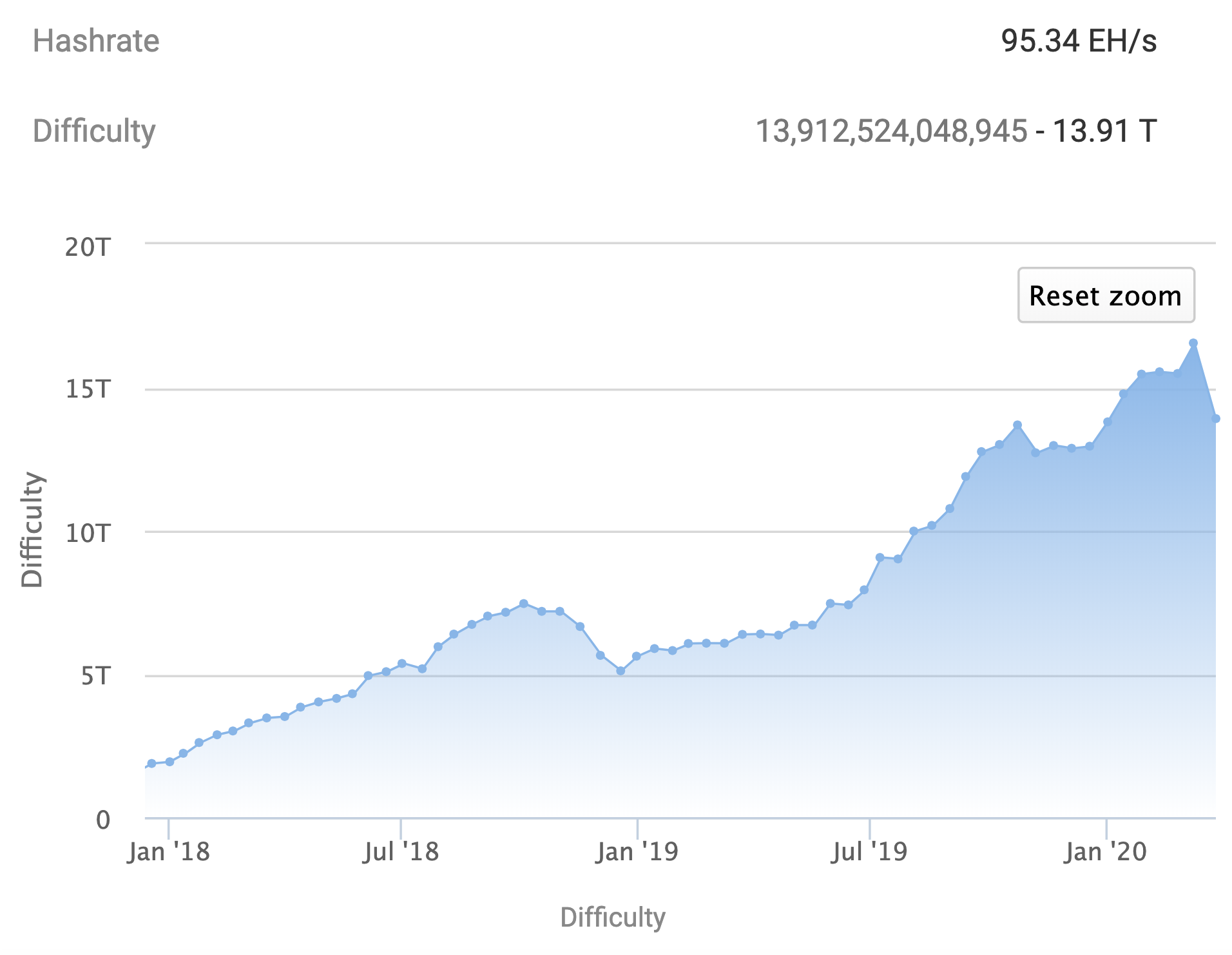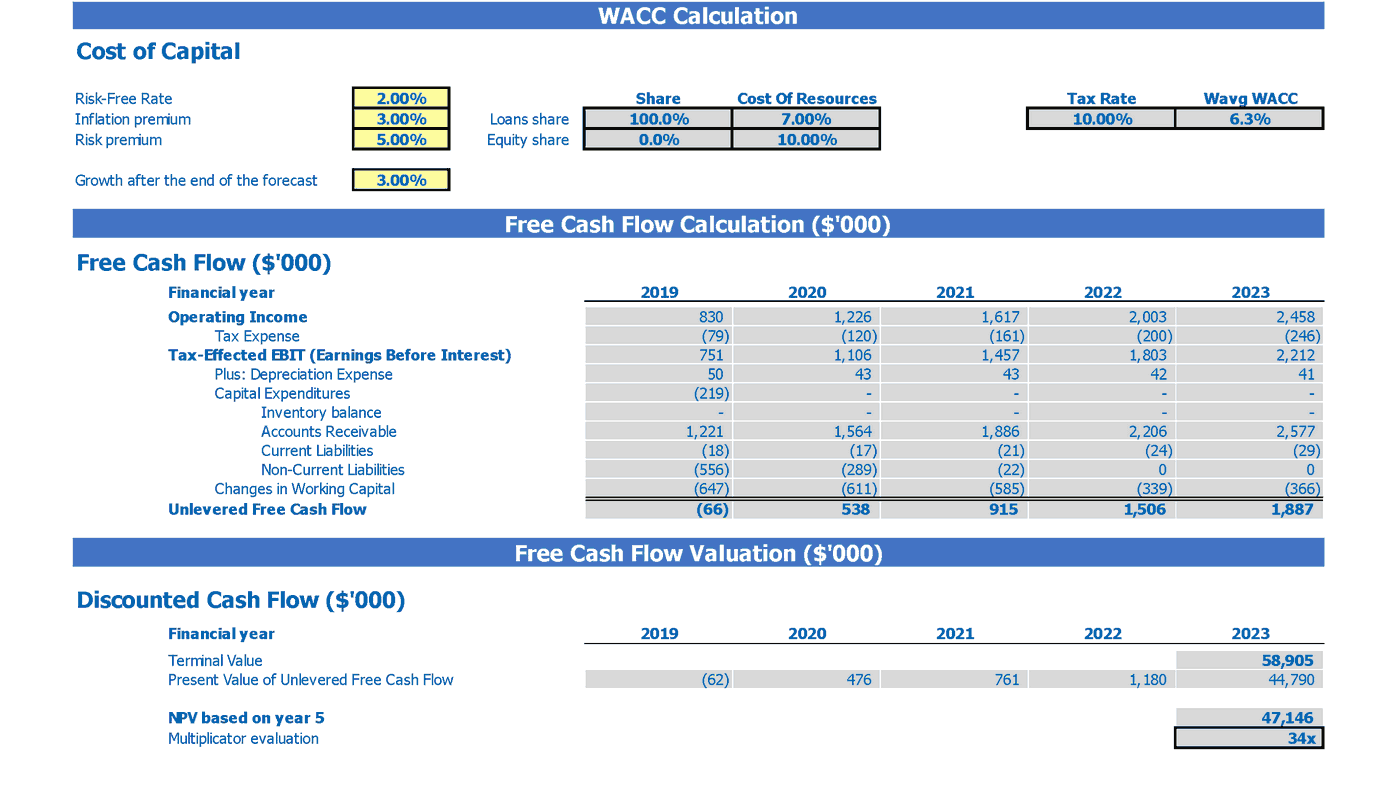Understanding The Recent Increase In Bitcoin Mining Difficulty

Table of Contents
Factors Contributing to the Increase in Bitcoin Mining Difficulty
The Bitcoin mining difficulty, a measure of how hard it is to solve the complex cryptographic puzzles required to mine a block and earn Bitcoin rewards, is a dynamic metric that adjusts roughly every two weeks. This adjustment is directly linked to the network's hashrate and several other key factors.
The Role of Hashrate
The hashrate, representing the total computational power dedicated to Bitcoin mining, is fundamentally intertwined with mining difficulty. A higher hashrate means more miners are competing to solve the cryptographic puzzles. To maintain the target block time of approximately 10 minutes, the network automatically increases the mining difficulty. This ensures the consistent generation of new blocks, regardless of the fluctuating hashrate.
- Increased miner participation: More miners joining the network directly contribute to a higher hashrate.
- Adoption of more efficient ASICs: The development and widespread adoption of sophisticated Application-Specific Integrated Circuits (ASICs) significantly boosts individual mining power, driving up the overall hashrate.
- New mining pools: The formation of larger and more efficient mining pools concentrates computing power, further increasing the network's hashrate.
- Geographical shifts in mining activity: Changes in energy costs and regulatory environments can lead to shifts in mining activity, potentially influencing the global hashrate.
Impact of the Bitcoin Halving
The Bitcoin halving, an event that occurs approximately every four years, reduces the Bitcoin block reward miners receive for successfully solving a cryptographic puzzle. This halving significantly impacts miner profitability. To compensate for the reduced reward, miners are incentivized to increase their hashrate to maintain or improve their earnings, leading to a subsequent rise in mining difficulty.
- Explanation of the halving mechanism: The halving is a programmed event hardcoded into the Bitcoin protocol, designed to control inflation.
- Its effect on miner revenue: The halving directly cuts miner revenue in half, creating immediate pressure on profitability.
- The subsequent increase in competition: Miners compete fiercely for the reduced block rewards, increasing the hashrate and ultimately pushing up the Bitcoin mining difficulty.
Technological Advancements in Mining Hardware
Continuous advancements in ASIC technology play a crucial role in increasing the Bitcoin hashrate and, consequently, the mining difficulty. More powerful and energy-efficient ASICs allow miners to solve cryptographic puzzles faster and more cost-effectively, leading to a higher collective hashrate.
- Examples of new ASICs: Regular releases of new ASICs from various manufacturers constantly push the boundaries of mining efficiency.
- Advancements in chip technology: Improvements in semiconductor technology enable the creation of more powerful and energy-efficient chips.
- Impact on energy consumption: While more efficient ASICs reduce energy consumption per unit of hashpower, the overall energy consumption of the network can still increase due to the growing hashrate.
Implications of Increased Bitcoin Mining Difficulty
The increase in Bitcoin mining difficulty has several important implications for the entire ecosystem.
Impact on Miners' Profitability
Higher Bitcoin mining difficulty directly impacts miners' profitability. The increased competition for block rewards necessitates greater efficiency and lower operational costs to maintain positive margins.
- Higher energy costs: Mining consumes substantial amounts of energy; higher difficulty exacerbates these costs.
- Need for efficient cooling systems: Powerful mining hardware generates significant heat, requiring efficient cooling solutions that add to operational expenses.
- Potential for reduced profit margins: The combination of reduced block rewards (due to halving) and increased difficulty can significantly squeeze profit margins for less efficient miners.
Strengthening of Network Security
Paradoxically, increased Bitcoin mining difficulty significantly enhances the network's security and resilience. It makes it computationally far more expensive for malicious actors to attempt a 51% attack, where they control more than half of the network's hashrate to manipulate transactions or reverse them.
- Higher difficulty makes it computationally more expensive to attack the network: This acts as a powerful deterrent against malicious activities.
- Improved decentralization: A higher difficulty makes it harder for a single entity or group to dominate the network, fostering decentralization.
- Enhanced trust in the system: The robust security provided by increased difficulty reinforces trust and confidence in the Bitcoin network.
Influence on Bitcoin Price
While not a direct causal relationship, the increased Bitcoin mining difficulty can indirectly influence the price. A more secure and robust network, resulting from higher difficulty, can positively impact investor sentiment and potentially contribute to higher Bitcoin prices. This is because a more secure network is less vulnerable to attacks and perceived as more stable.
- Relationship between network security and investor sentiment: Increased security often translates to higher investor confidence.
- Potential correlation between difficulty and price (though not a direct causation): While not a guaranteed correlation, a more secure network can contribute to a more positive market outlook.
Conclusion
The recent increase in Bitcoin mining difficulty is a multifaceted phenomenon driven by factors such as rising hashrate, the Bitcoin halving, and technological advancements in mining hardware. This increase, while challenging for some miners, ultimately strengthens the security and resilience of the Bitcoin network. Understanding these dynamics is crucial for navigating the evolving landscape of the cryptocurrency market. To stay informed, monitor Bitcoin mining difficulty trends, understand the implications of these changes, and stay updated on Bitcoin mining difficulty adjustments. Further research into Bitcoin's protocol and mining economics can provide a deeper understanding of this critical aspect of the cryptocurrency.

Featured Posts
-
 Investing In Palantir A Practical Look At The Current Market Conditions
May 09, 2025
Investing In Palantir A Practical Look At The Current Market Conditions
May 09, 2025 -
 Daycare Costs Explode After Expensive Babysitting A Financial Warning
May 09, 2025
Daycare Costs Explode After Expensive Babysitting A Financial Warning
May 09, 2025 -
 Masshtabnoe Otklyuchenie Sveta V Sverdlovskoy Oblasti Posle Snegopada
May 09, 2025
Masshtabnoe Otklyuchenie Sveta V Sverdlovskoy Oblasti Posle Snegopada
May 09, 2025 -
 Can Androids Updated Look Steal Gen Z Users From Apple
May 09, 2025
Can Androids Updated Look Steal Gen Z Users From Apple
May 09, 2025 -
 Vu Viec Bao Mau Tat Tre Em Tien Giang Bai Hoc Ve An Toan Cho Tre
May 09, 2025
Vu Viec Bao Mau Tat Tre Em Tien Giang Bai Hoc Ve An Toan Cho Tre
May 09, 2025
